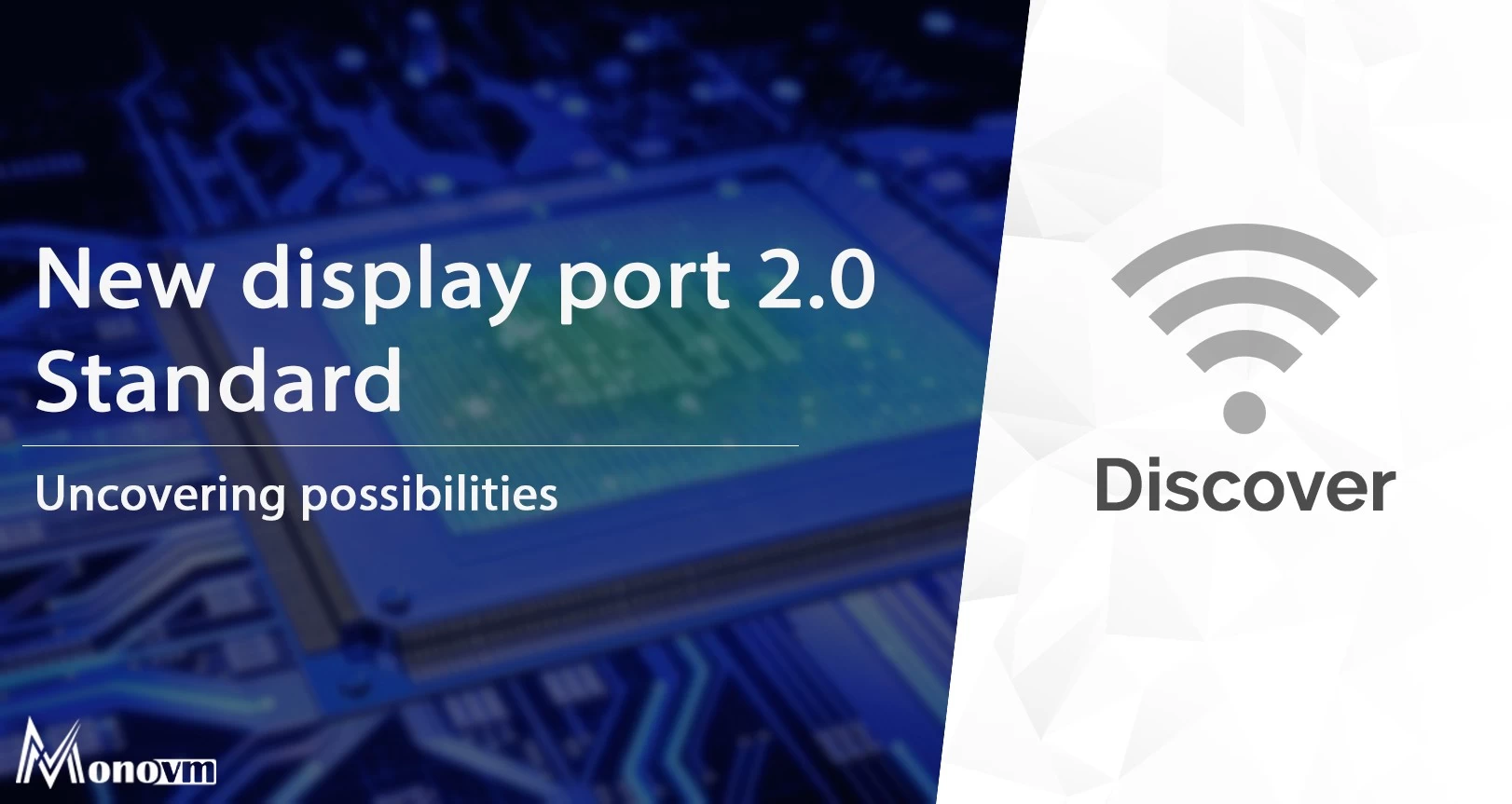List of content you will read in this article:
Just fifteen years ago, Video Electronics Standards Association (i.e., VESA) released the DisplayPort 1.0 standard with an 8.64Gbit/s data rate. Since then, multiple improvements have been made, but not as large as the ones announced last year. VESA unveiled the new DisplayPort 2.0 specification with a max payload of 77.37Gbps. It is expected to start shipping with monitors in late 2021.
What is DisplayPort?
Despite what many might believe, it is not simply just a cable with DP connectors, but a standard for transmitting video and audio from a player to a display. As the standard was designed for use in computers, there are some advantages to using it in your PC setup. First and foremost, for the gaming community, it supports Nvidia’s G-Sync and AMD’s FreeSync technologies, allowing for improved gaming quality by eliminating screen tears.
For improved productivity in a more professional atmosphere, a single DisplayPort connection supports the use of multiple monitors, meaning they only take up one port in your system, which could come in handy for smaller and low-profile builds. DisplayPort signals can even be sent via a USB-C port so that there are no issues connecting even the smallest systems or laptops to a computer monitor.
HDMI vs DisplayPort
While both DisplayPort and HDMI (i.e., High-Definition Media Interface) have the same use, to send high-definition video and audio from a source to a display, the two technologies were developed with different ideas in mind.
HDMI was originally created in 2003 by a collaboration of large display manufacturers, including Sony, Philips, Panasonic, and Toshiba. The main goal was to create a standard that will be used mainly by image-driven devices, thus you see the majority of TVs, projectors, and home computers with an HDMI port.
DisplayPort, on the other hand, was introduced via a consortium of large PC and chip manufacturers in order to replace the then-outdated VGA and DVI standards. The primary focus of this technology was to have it used in professional IT equipment and computer monitors.
DP 1.0 vs DP 2.0
The new near 80Gbps max bandwidth is 10 times that of the original DisplayPort 1.0 and 3x more than its latest update (i.e. DisplayPort 1.4) to the standard. These improvements will allow the port to be the first to support 8K resolution (i.e. 7680x4320) at a 60Hz refresh rate with full-color 4:4:4 resolution and HDR.
All these upgrades can be enjoyed over both the native DP connector as well as the USB-C connector via DP Alt Mode. Since USB-C provides a single connector for USB data, video data, and power, the high data rates supported by DP 2.0 allow the users to use only one wire for power, SuperSpeed USB data, and super-high-resolution video.
DisplayPort 2.0 Supported Configurations
The high-bandwidth connector provides a great amount of versatility and configurations for high-resolutions and refresh rates. Here are some configurations DP 2.0 will support as envisioned by VESA:
Single display resolutions:
- One 16K (15360x8460) display running at 60Hz and 30 bpp 4:4:4 HDR (with DSC)
- One 10K (10240x4320) display running at 60Hz and 24 bpp 4:4:4 (no compression)
Dual display resolutions:
- Two 8K (7680×4320) displays running at 120Hz and 30 bpp 4:4:4 HDR (with DSC)
- Two 4K (3840×2160) displays running at 144Hz and 24 bpp 4:4:4 (no compression)
Triple display resolutions:
- Three 10K (10240×4320) displays running at 60Hz and 30 bpp 4:4:4 HDR (with DSC)
- Three 4K (3840×2160) displays running at 90Hz and 30 bpp 4:4:4 HDR (no compression)
Although it’s highly unlikely that manufacturers will take advantage of the 10K and 16K resolutions in the near future, being able to run two and even three displays in 4K resolution off a single connector will open new doors for custom-built display configurations.
With Dell’s UltraSharp 32 8K monitor already available and Apple’s 6K monitor announced recently, this new standard arrived just in time for the industry to shift past 4K monitors.
Do You Need DP 2.0?
Now, this is quite a tricky question. As there are still no monitors or graphics cards supporting the standard, it will take a while for the technology to be widely adopted on the market. Nevertheless, years down the line, it will eventually replace DisplayPort 1.4. Thus, if you wish to future-proof your system to the extreme, consider getting a DP 2.0-supported monitor when they release.
Conclusion
Unfortunately, there are still no concrete release dates for the DisplayPort 2.0 official launch. Originally, displays with this new standard were set to release in late 2020, however, like many other things, the global situation brought the plans to a halt. Certain PlugTests still need to be carried out to help iron out any possible issues that can potentially appear.
Despite the delay, things are now back on track and unless this year throws us another curveball, we should expect a few flagship monitors from major display manufacturers incorporating the new DP standard.
